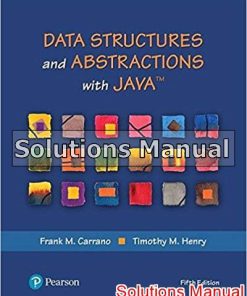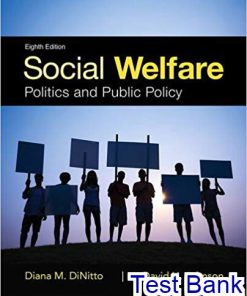Part I. Background
1. Why Study Public Finance?
The Four Questions of Public Finance
Why Study Public Finance? Facts on Government in the U.S. and Around the World
Why Study Public Finance Now? Policy Debates over Social Security, Health Care, and Education
2. Theoretical Tools of Public Finance
Constrained Utility Maximization
Putting the Tools to Work: TANF and Labor Supply Among Single Mothers
Equilibrium and Social Welfare
Welfare Implications of Benefit Reductions: The TANF Example Continued
Appendix: The Mathematics of Utility Maximization
3. Empirical Tools of Public Finance
The Important Distinction between Correlation and Causality
Measuring Causality with Data We’d Like To Have: Randomized Trials
Estimating Causation with Data We Actually Get: Behavioral Observations
Appendix: Cross-sectional Regression Analysis Example
4. Tools of Budget Analysis
Federal Budgeting
Do Debts and Deficits Mean Anything? A Long Run Perspective
Why Do We Care About the Government’s Fiscal Position?
Part II. Externalitites and Public Goods
5. Externalities: Problems and Solutions
Externality Theory
Private Sector Solutions to Externalities
Public Sector Solutions to Externalities
Distinctions between Price and Quantity Approaches to Regulation
6. Externalities in Action: Environmental and Health Externalities
Acid Rain
Global Warming
The Economics of Smoking
The Externalities of Other Addictive Behaviors
7. Public Goods: Problems and Solutions
Optimal Provision of Public Goods
Private Provision of Public Goods
Public Provision with Private Provision
Appendix: Mathematics of Public Goods
8. Cost/Benefit Analysis
Measuring the Benefits of Public Goods
Measuring the Costs of Public Goods
Putting it all Together: Cost/Benefit Comparisons
9. Implementing Public Goods: Political Economy and Public Choice
Optimal Financing of Public Goods and its Problems
Mechanisms for Aggregating Individual Preferences
Representative Democracy and the Median Voter Theory
Public Choice Theory: The Foundations of Government Failure
10. State and Local Government Expenditures
Fiscal Federalism in the U.S. and Abroad
Optimal Fiscal Federalism
Should We Redistribute Across Communities? Intergovernmental Grants
11. Public Goods in Action: Education
Why Should the Government be Involved in Education?
How Should the Government be Involved in Education? Crowding Out and Vouchers
Measuring the Returns to Education
The Role of the Government in Higher Education
PART III. SOCIAL INSURANCE AND REDISTRIBUTION
12. Social Insurance
What is Insurance and Why do Individuals Value it?
Why Have Social Insurance?
Social Insurance vs. Self-Insurance: How Much Consumption Smoothing?
The Problem with Insurance: Moral Hazard
Putting it All Together: Optimal Social Insurance
Appendix: Expected Utility Model and Adverse Selection
13. Social Security
What is Social Security and How Does It Work?
Consumption Smoothing Benefits of Social Security
Social Security and Retirement
Social Security Reform
14. Unemployment Insurance, Workers’ Compensation and Disability Insurance
Institutional Features of UI, WC and DI
Consumption Smoothing Benefits of Social Insurance Programs
Moral Hazard Effects of Social Insurance Programs
The Costs and Benefits of Social Insurance to Firms
Implications for Program Reform
Appendix: Quasi-experimental Estimates of the Effects of UI
15. Health Insurance I: Health Economics and Private Health Insurance
An Overview of Health Care in the U.S.
The Efficiency Costs of Health Insurance: Patient-side Moral Hazard
The Efficiency Costs of Health Insurance: Provider-side Moral Hazard
16. Health Insurance II: Medicare and Medicaid
The Medicaid Program for Low Income Mothers and Children
What are the Effects of the Medicaid Program
The Medicare Program
What are the Effects of the Medicare Program?
Long Term Care
Lessons for Health Care Reform in the U.S.
17. Income Distribution and Welfare
Why Redistribute?
Welfare Policy in the U.S.
The Costs of Welfare Policy
Reforming Welfare
PART IV. TAXATION IN THEORY AND PRACTICE
18. Taxation in the U.S. and Around the World
Types of Taxation in the U.S. and Other Nations
Basic Structure of the Income Tax in the U.S.
Measuring the Distributional Properties of Tax Systems
Defining the Income Tax Base
Externality/Public Goods Rationales for Deviating from Haig-Simons
The Appropriate Unit of Taxation
19. The Equity Implications of Taxation—Tax Incidence
The Three Rules of Tax Incidence
Tax Incidence Extensions
General Equilibrium Tax Incidence
The Incidence of Taxation in the U.S.
Appendix: The Mathematics of Tax Incidence
20. Tax Inefficiencies and Their Implications for Optimal Taxation
Taxation and Economic Efficiency
Optimal Commodity Taxation
Optimal Income Taxation
Tax/Benefit Linkages and the Financing of Social Insurance Programs
Appendix: The Mathematics of Optimal Taxation
21. Taxes on Labor Supply
Taxation and Labor Supply: Theory
Taxation and Labor Supply: Evidence
Tax Incentives and Labor Supply Decisions: The Earned Income Tax Credit
The Tax Treatment of Child Care Expenditures
22. Taxation of Savings
Taxation of Savings: Theory
Taxation of Savings: Evidence
Tax Incentive for Savings
23. Taxes on Risk Taking and Wealth
Taxation and Risk-Taking: Theory and Evidence
Tax Evasion
Capital Gains Taxation
Estate Taxation
Property Taxation
24. Issues of Corporate Taxation
What are Corporations and Why Do We Tax Them?
The Structure of the Corporate Tax
The Efficiency Consequences of the Corporate Tax—Investment
Treatment of International Corporate Income
The Efficiency Consequences of the Corporate Tax—Financing
25. Tax Reform
Tax Rates and Tax Revenues
Tax Simplicity
Tax Reform Dynamics: The Politics of Tax Reform
Consumption Taxation and Other Fundamental Tax Reforms











































































